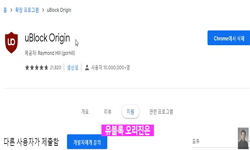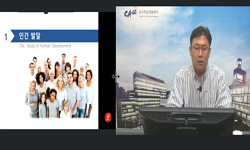최근 피아노와 함께 대중적으로 교육되고 있는 바이올린 교육은 정서적 안정과 집중력을 기르고, 음악 기능 및 소질 개발에 긍정적인 영향을 줄 수 있다. 이러한 바이올린을 초기 경험하는 ...
http://chineseinput.net/에서 pinyin(병음)방식으로 중국어를 변환할 수 있습니다.
변환된 중국어를 복사하여 사용하시면 됩니다.
- 中文 을 입력하시려면 zhongwen을 입력하시고 space를누르시면됩니다.
- 北京 을 입력하시려면 beijing을 입력하시고 space를 누르시면 됩니다.
유,초등 연계를 고려한 Violin 교수,학습 활동 방안 연구 -만 4세-만 7세 유,아동을 중심으로- = A Study on Violin Teaching & Learning Activity Plans Considering the Connection of Pre-school and Elementary School
한글로보기https://www.riss.kr/link?id=A75543931
- 저자
- 발행기관
- 학술지명
- 권호사항
-
발행연도
2008
-
작성언어
-
- 주제어
-
KDC
374.6705
-
자료형태
학술저널
-
수록면
77-102(26쪽)
- 제공처
-
0
상세조회 -
0
다운로드
부가정보
국문 초록 (Abstract)
최근 피아노와 함께 대중적으로 교육되고 있는 바이올린 교육은 정서적 안정과 집중력을 기르고, 음악 기능 및 소질 개발에 긍정적인 영향을 줄 수 있다. 이러한 바이올린을 초기 경험하는 대부분은 만 4세에서 만 7세에 해당하는 아동이며, 이들은 발달 단계 특성상 유사점이 많고 연계적인 특성이 매우 강하기 때문에 발달 단계 특성과 음악적 인지 특성의 연계성을 고려한 바이올린 교수·학습 활동 방안에 대한 연구를 모색하여야 할 필요성이 있다. 이러한 필요성에 따라, 본 논문은 유·초등 연계를 고려한 바이올린 교수·학습 활동 방안에 대한 연구를 하였다. 연구의 이론적 근거는 발달 심리학적 근거를 제공하는 Piaget의 인지 발달론과 교육 방법을 제시해줄 수 있는 Dalcroze, Kodaly, Orff, Suzuki의 음악 교육론을 살펴봄으로써 유아기 14차시, 초등학교 14차시, 총 28차시의 연계적인 교수·학습 활동 방안 계획을 마련하였다. 또한 유아와 초등학교 아동의 바이올린 교수·학습 활동에 대한 연구를 구체적으로 실현할 수 있는 방안을 각 차시 별로 제시하였다. 그러나 아래의 논문은 원저자의 연구 내용을 요약한 것으로서 한눈에 쉽게 이해할 수 있는 ``표`` 를 주로 사용하였으며, 구체적 교수·학습 활동 방안 28차시 계획 중에서 유아기 1차시와 초등학교 1차시만을 제시하였다. 또한, 이론적 배경은 생략하고 저자의 연구 내용을 중심으로 요약하였다.
다국어 초록 (Multilingual Abstract)
Music education is an important education that can accomplish the cognitive, definitive and psychomotor objectives of education presented by Bloom using music, the most familiar medium which stimulates the aesthetic attribute of humans. This music edu...
Music education is an important education that can accomplish the cognitive, definitive and psychomotor objectives of education presented by Bloom using music, the most familiar medium which stimulates the aesthetic attribute of humans. This music education is being materialized in a variety of forms, including instrumental music, singing, creation, and appreciation. Among the instrumental music education, especially violin is today being educated popularly together with piano as a musical instrument that builds up emotional stability and concentration ability and also has a positive effect on the development of musical skill and aptitude. Accordingly, along with an increased interest on violin education, various educational methods are being studied and also educated at fields. The problem, however, is that the education is focused on the effective technique improvement without considering the characteristics of developmental and musically-cognitive ability of the children aged 4 to 7 initially experiencing violin, namely young children and low-grade elementary school students who are immature from all of physical, mental and social aspects. But in case of violi education without understanding the developmental features of infants and children, they are apt to lose interest in violin and a non-educational result losing a liking for music can also be caused. Therefore, it will be necessary to study methods to educate violin suitably to the developmental features of them, and in particular, because children aged 4-7 have much similarity and strong connective features in their developmental phase, it is necessary to seek to study violin teaching & learning activity plans taking account of the connectivity of developmental phase characteristics and musically cognitive ones. According to this necessity, this paper was conducted for studying violin teaching & learning activity plans taking preschool & elementary connection into consideration. The theoretical grounds of the study were prepared by looking into Piaget`s theory of cognitive development-providing developmental and psychological grounds-and the music education theory of Dalcroze, Kodaly, Orff and Suzuki-that can suggest educational methods. For the music education of young children based on these, the suggestive points of theoretical backgrounds referred to as the "sensual music experience through active plays and physical expression," were derived and summarized, and those referred to as "cognitive music experience and the education of music instruments" were summarized for the music education of elementary school students. Thus the violin teaching & learning activity appropriate to young children was defined as "Preliminary violin technique teaching & learning activity", that adequate to low-grade elementary school students was defined as "Violin technique teaching & learning activity", all factors needed for the activity plans of each period were looked into taking account of their connectivity, and the connective teaching & learning activity plans of 14 cycles each for young children and elementary school students, in other words, a total of 28 cycles, were worked out. In particular, the preliminary violin technique teaching & learning activity plan was intended to suggest violin education adequately to the developmental phase of young children by proposing various learning methods such as physical expression, rhythm learning, simulated violin and simulated-bow violin experience. In conclusion, this study concretely conducted a study of violin education considering the developmental phase, music-cognitive features and connective characteristics of young children and low-grade elementary school students, most of those who initially experience violin, but it has a limitation whose effects were not verified through field applications. It is suggested, therefore, that the studies on violin teaching & learning activity plans considering the connection of pre-school and el
동일학술지(권/호) 다른 논문
-
- 한국달크로즈유리드믹스학회
- 성인지 ( In Ji Sung )
- 2008
-
유리드믹스와 음악교육 프로그램이 유아의 일상적 스트레스와 유치원 적응에 미치는 영향
- 한국달크로즈유리드믹스학회
- 최유정 ( You Jeong Choi )
- 2008
-
달크로즈 유리드믹스를 활용한 음악활동이 유아기 음악성 향상에 미치는 효과
- 한국달크로즈유리드믹스학회
- 최지원 ( Ji Won Choi )
- 2008
-
장애아를 위한 『통합적 미술교육』 프로그램에 관한 연구
- 한국달크로즈유리드믹스학회
- 양경희 ( Kyung Hee Yang )
- 2008




 KISS
KISS






